5 Strength Tests Every Woman Over 45 Should Be Able to Ace
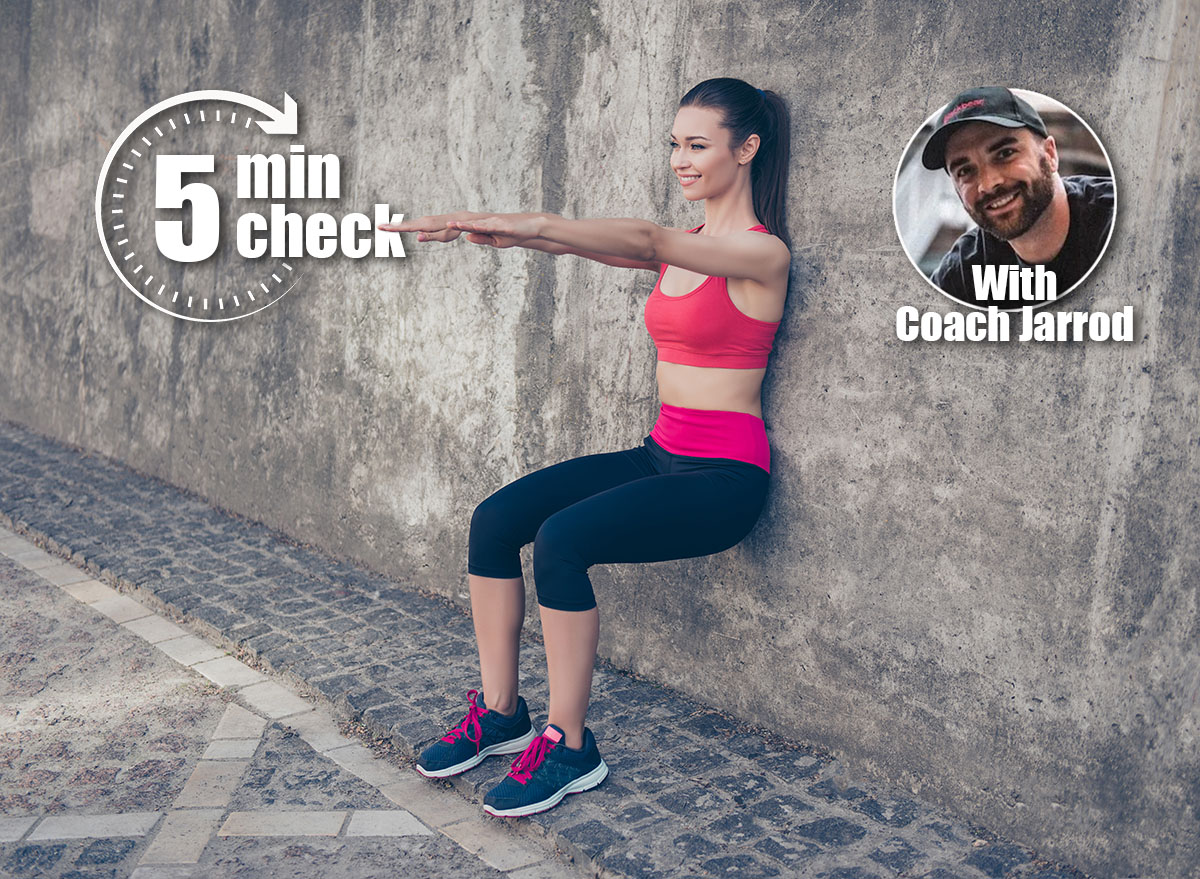
You don’t need a gym membership to know if your strength is where it should be. You can learn a lot about your fitness in just a few minutes with nothing more than your body and maybe a household object or two.
For women over 45, strength is about more than lifting weights. It’s about moving through your day with ease, staying independent, and feeling confident in how your body performs. These quick tests will tell you exactly where you stand.
No fluff, no guesswork. If you can ace these five assessments, your strength is in a great place. If not, they’ll show you exactly what to work on.
5 Strength Tests Women Over 45 Should Master
Strength Test #1: The 30-Second Sit-to-Stand Test
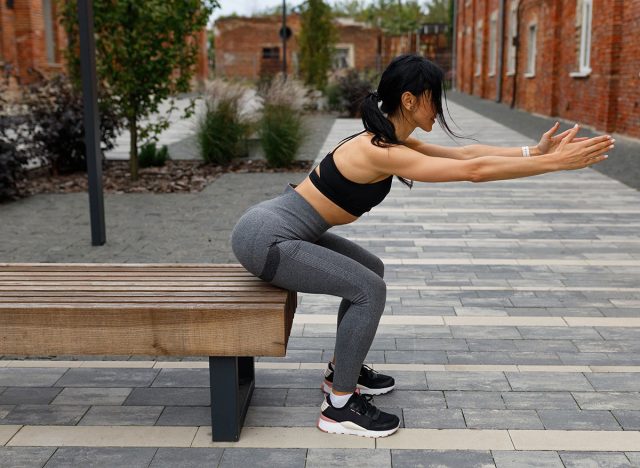
Standing up from a chair sounds simple, but it’s one of the clearest indicators of functional lower-body strength. This test challenges your quads, glutes, and core while checking your balance and coordination. If you can’t do it easily, it often means those muscles aren’t strong enough to support everyday tasks like climbing stairs, getting off the floor, or even walking for long periods.
How to do it:
— Sit on a sturdy chair with your feet flat and hip-width apart.
— Cross your arms over your chest to avoid using them for support.
— Press through your heels and stand up fully.
— Lower yourself back to the seat in a controlled motion.
— Repeat as many times as possible in 30 seconds.
Form tip: Keep your chest up and drive through your heels. Avoid letting your knees cave inward.
How you measure up:
Excellent: 15 or more reps
Good: 10 to 14 reps
Needs work: Fewer than 10 reps
Strength Test #2: Max Jump Squats in 30 Seconds
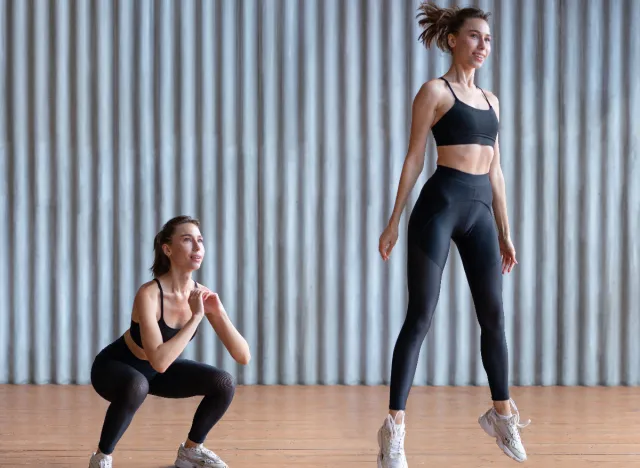
Explosive power is often overlooked in midlife training, but it’s essential for staying agile and preventing injuries. This test measures lower-body strength, coordination, and cardiovascular endurance all at once. The ability to produce power quickly translates to better performance in real-life movements like climbing stairs, rising from the floor, or reacting to a quick loss of balance.
How to do it:
— Stand with your feet shoulder-width apart and arms at your sides.
— Lower into a squat by pushing your hips back and bending your knees.
— Explode upward into a jump, swinging your arms naturally for momentum.
— Land softly with knees slightly bent to absorb the impact.
— Immediately repeat as many jump squats as possible in 30 seconds.
Form tip: Focus on soft, controlled landings. Keep your chest up and avoid letting your knees collapse inward.
How you measure up:
Excellent: 20 or more reps
Good: 12 to 19 reps
Needs work: Fewer than 12 reps
Strength #3: The Loaded Carry
If you’ve ever carried grocery bags or luggage, you’ve done a version of this test. Loaded carries measure full-body strength, grip endurance, and core stability. They also check your posture and coordination under load. If you can carry the weight while maintaining good form, you’re strong enough to handle real-life tasks without strain or injury.
How to do it:
- Grab two dumbbells or heavy objects of equal weight.
- Stand tall with shoulders back and core braced.
- Hold the weights at your sides with a firm grip.
- Walk forward at a steady pace for as long as possible.
- Stop when your grip weakens or posture breaks.
Form tip: Keep your steps steady and your body upright. Avoid leaning or twisting as you walk.
How you measure up:
- Excellent: 60 seconds or more
- Good: 30 to 59 seconds
- Needs work: Less than 30 seconds
Strength Test #4: The Forearm Plank
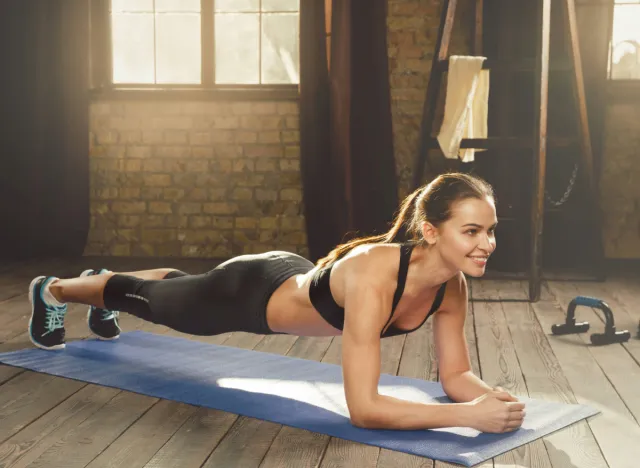
Planks aren’t just an ab exercise. They test your entire midsection, including deep core stabilizers that protect your spine and keep your body steady during movement. A strong plank means you can maintain good posture, prevent back pain, and move efficiently through daily life. It also builds mental grit, which matters more than most people realize.
How to do it:
- Get on the floor with forearms on the ground and elbows under your shoulders.
- Extend your legs straight behind you, toes pressing into the floor.
- Form a straight line from your head to your heels.
- Engage your core, glutes, and quads to stay stable.
- Hold as long as you can without sagging or arching.
Form tip: Look slightly ahead of your hands to keep your neck in line with your spine.
How you measure up:
- Excellent: 45 seconds or more
- Good: 30 to 44 seconds
- Needs work: Less than 30 seconds
Strength Test #5: The Wall Sit
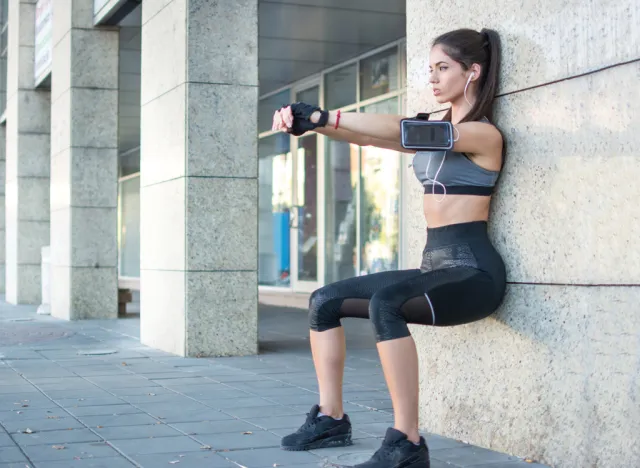
This deceptively simple move torches your quads and glutes while testing your lower-body endurance. It’s not just about muscle strength — it checks how well your legs can handle sustained tension, which translates to better performance in everything from hiking to long walks.
How to do it:
- Stand with your back flat against a wall.
- Slide down until your knees form a 90-degree angle.
- Keep your feet flat and positioned under your knees.
- Press your lower back into the wall for support.
- Hold this position as long as you can while keeping form.
Form tip: Press your lower back into the wall and keep your knees stacked over your ankles.
How you measure up:
- Excellent: 60 seconds or more
- Good: 30 to 59 seconds
- Needs work: Less than 30 seconds
How to Improve Your Scores
Building strength doesn’t require hours in the gym. Consistent training in the right areas can help you crush these tests and feel stronger every day.
- Train your lower body for strength and power: Add squats, lunges, and step-ups to strengthen your legs for the sit-to-stand test. Incorporate jump squats or box jumps once or twice per week to build the explosive power needed for the jump squat test.
- Develop core stability: Practice planks, bird dogs, and glute bridges to build the endurance needed for longer plank holds and improve posture across every test.
- Build endurance for isometric holds: Perform wall sits and timed plank holds regularly, adding a few seconds each week to boost your wall sit and plank scores.
- Practice the tests weekly: Familiarity breeds progress. Incorporate these exact movements into your routine to build strength and confidence over time.